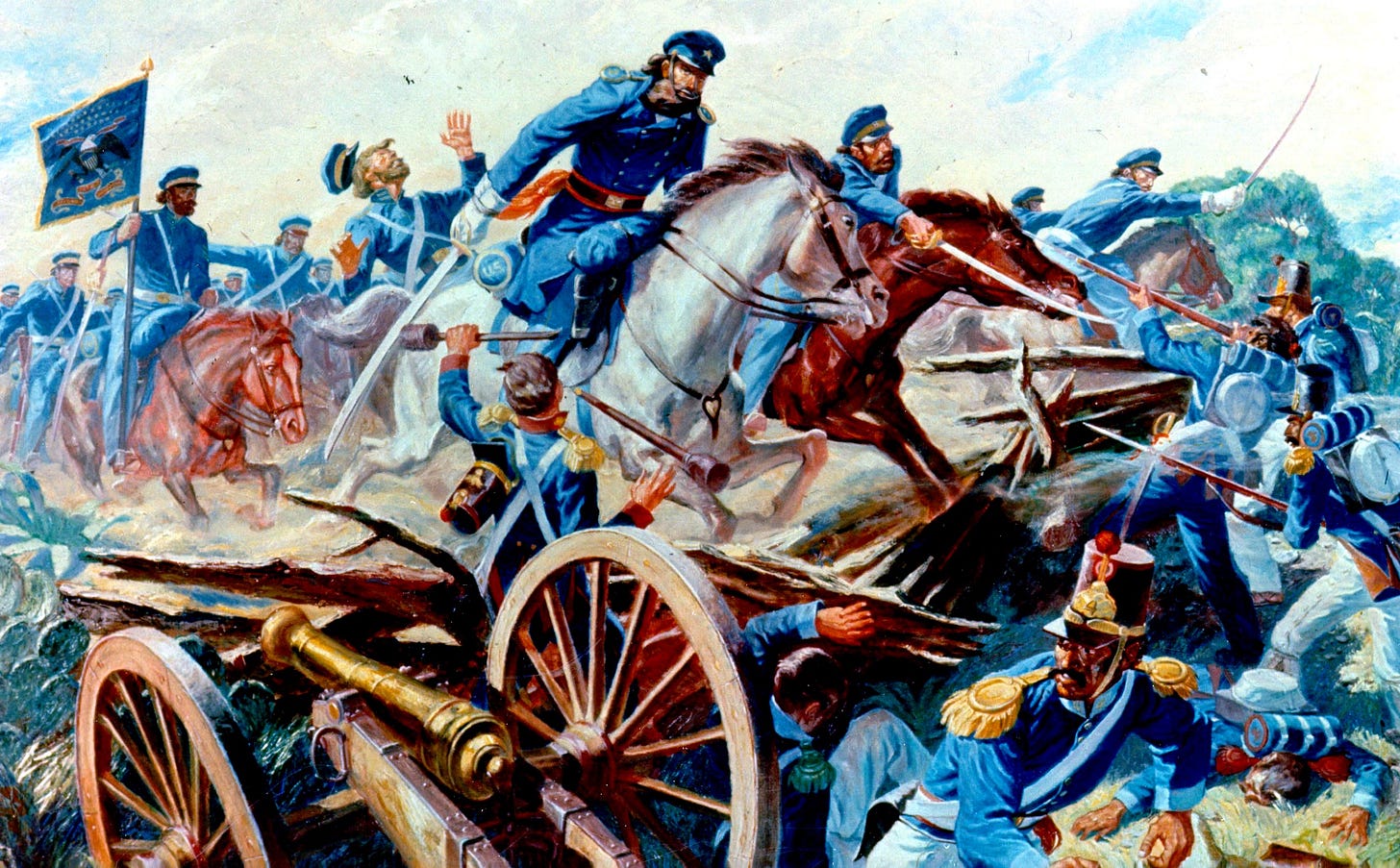TDIH: The Mexican-American War
A treaty almost didn’t happen. It came about only because an American diplomat disobeyed President James Polk’s explicit instructions.
On this day in 1848, the U.S. Senate ratifies the Treaty of Guadalupe Hidalgo, bringing an end to the Mexican-American War. The treaty almost didn’t happen. It came about only because an American diplomat disobeyed President James Polk’s explicit instructions.
In many ways, the Mexican-American War followed logically on the heels of the Texas Revolution. Texas won its independence from Mexico in 1836, but the two sides had never agreed on a boundary after the war. This disagreement persisted even as Texas was annexed into the United States in 1845. Actually, Mexico did not recognize Texas independence or the annexation—at all. As if the boundary dispute were not enough, the concept of “Manifest Destiny” surely added fuel to the fire. Many Americans believed that our country was destined to stretch from the Atlantic to the Pacific.
The war began in May 1846 when Mexican forces began bombarding Fort Texas in the disputed territory near the Rio Grande. The American army eventually rebuffed the Mexican attack, but armed conflict continued for 1.5 years afterwards. The final military blow to the Mexican government came in September 1847 when General Winfield Scott seized the Mexican capital.

In the meantime, Polk had dispatched Nicholas Trist as his representative to Mexico, hoping to negotiate a settlement. Even after General Scott’s victories on his route toward Mexico City, Trist was having a fair amount of trouble. At one point, an armistice had been called for peace talks, but that armistice had expired. Polk got frustrated and ordered Trist to come home.
Trist decided to disobey the order.
Remember, back then, messages would have taken a while to get from one point to another. As Polk’s order was traveling to Trist, the Mexican government had come back to the table, appointing commissioners for peace talks with the American envoy. Thus, Trist felt that matters had changed materially since Polk issued his order. He decided to disobey the President. He wrote his wife on December 4: “Knowing it to be the very last chance and impressed with the dreadful consequences to our country which cannot fail to attend the loss of that chance, I decided today at noon to attempt to make a treaty; the decision is altogether my own.”
A treaty wasn’t signed until February 2, 1848. However, Trist ended up achieving terms that were favorable for America. Mexico would finally recognize Texas as a part of the United States. It also ceded upper California, along with lands between California and the western border of the United States. The U.S. would pay $15 million, but it would receive more than 525,000 square miles.
Polk was not at all pleased when he heard that he’d been disobeyed. He refused to pay Trist’s salary! Nevertheless, Polk decided to submit the treaty to the Senate, which accepted it on March 10, with only a few changes.
After the treaty, the territory that would comprise our 48 contiguous states was almost as we know it today, although the Gadsden Purchase (1854) would add additional land in present-day New Mexico and Arizona.
P.S. The painting is of the Battle of Resaca de la Palma, fought at the end of the siege at Fort Texas.
Sources can always be found on my website, here.




If this was taught in school I have forgotten it. That’s why it’s important to be reminded of these events from time to time. It’s amazing that Trist felt compelled to disobey Polk’s orders. He was right there and knew the status of the negotiations. Polk did not. I wonder if the President would have listened and followed Trist’s reasoning if the communication was as fast as it is today? We can be glad that Trist followed through. It made a huge difference for the America.
A semi forgotten war that had great consequences. America expanded coast to coast, and many civil war generals honed their skills there. (plus the Marines got to add a verse to their hymn.)